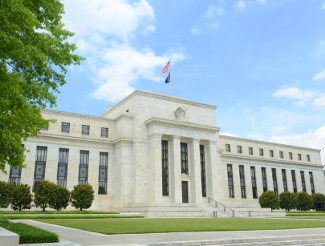The Federal Open Market Committee kept its target federal funds rate steady last week in a move that was largely anticipated by markets. Markets had priced in previous rate cuts and weren’t looking for another one during last week’s meeting. With stock markets having pushed to new highs since the last rate cut, the pressure from markets for the Fed to keep cutting rates just wasn’t there. But expectations for future rate cuts remain.
FOMC participants largely expect interest rates to be cut again next year too, an indicator that the Fed expects lower economic growth and a worsening economy. If the Fed really were bullish about the health of the economy, it wouldn’t be trying to signal that rates will drop next year.
One thing the Fed is keeping in mind is the impact that global economic developments could have on the economy. That’s an indicator that the Fed is thinking not just about the trade war with China, but the fact that Europe is also on the verge of falling into recession. That will place pressure on the European Central Bank to further ease its monetary policy, which will then require the Fed to react.
Curiously absent from the Fed’s official statement is any mention of the massive corporate debt bubble that exists in the US today. Nor did the Fed mention anything about the trouble in repo markets. With so many potential problems lurking just under the hood of the US economy, problems to which the Fed has reacted by engaging in what essentially is QE4, it’s almost as though the Fed doesn’t want us to know how bad things really are.
Unlike in 2008, when the Fed and Treasury tried to scare Congress into a massive bailout by warning that the US financial system was on the verge of collapse, the Fed this time around is trying to lull us into a false sense of security by telling us that everything is fine, all while it is pumping hundreds of billions of dollars into the financial system.
Investors who take the Fed’s statements at face value are at risk of seeing massive losses to their investment portfolios if they fail to take steps to protect their portfolios before markets crash. Stock markets lost more than half their value during the last financial crisis, and could lose as much or more during the next crisis.
Many of the investors who lost money during the last crisis watched enviously as gold rose throughout 2008 and continued to rise after the recession officially ended. Investors who invested their money in gold saw the gold portion of their portfolios make great gains in 2008, protecting them from some of the worst losses throughout the crisis. And investors who invest in gold today stand to benefit in the future when stock markets crash and gold rises once again.
This article was originally posted on Goldco.





